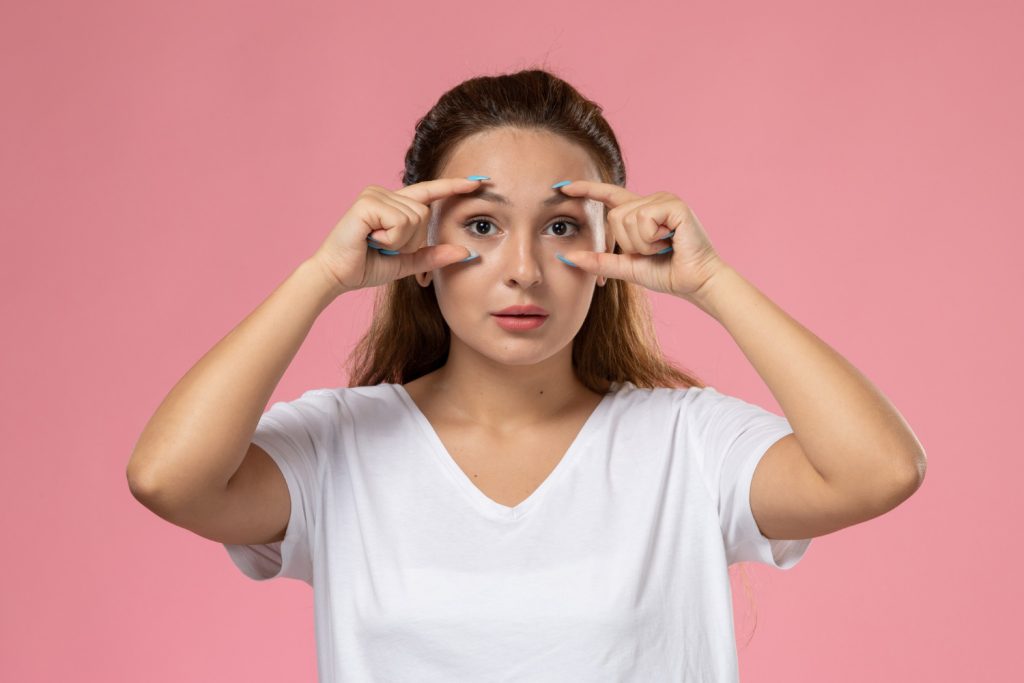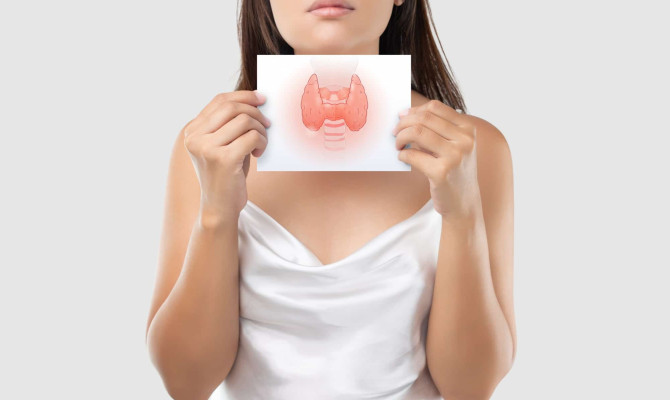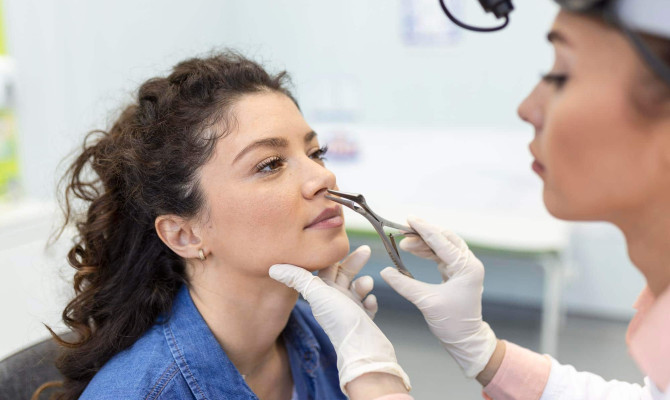Brown Spots In The Eyes: Causes & Management

- Eyes
- 17 Oct 2023
Introduction
Brown Spots in the Eyes
The eyes often called the windows to the soul, are a source of vision and a canvas that can reveal various intriguing details about one’s health. Among the many eye conditions that can manifest, brown spots on the eye, relatively uncommon, can be a cause for concern and curiosity. Melanocytes, the cells responsible for creating melanin, the pigment that gives our skin, hair, and eyes their color, make up the majority of these spots.

This comprehensive article will explore the world of brown spots on the eye. We will explore the various types of brown spots, their possible causes, how to identify them, and the diagnostic procedures used to assess their nature. Additionally, we will discuss the available treatment options and other guidance on how to live with these spots, emphasizing the importance of eye health and regular checkups. 1 Introduction| Researched based study from National Institutes of Health
Brown Spots
What are Brown Spots on the Eye?
- Brown spots on the eye, also known as ocular melanocytosis or eye freckles, are pigmented areas that develop on different eye parts.
- These spots are typically brown or black and can appear on various structures within the eye, including the Iris, sclera (white part of the eye), and the conjunctiva (thin membrane covering the front of the eye).
- These spots are primarily composed of melanocytes, cells responsible for producing melanin, the pigment that gives color to our skin, hair, and eyes.
Types of Brown Spots:
Iris Nevus
- On the Iris, the colored portion of the eye, the brown specks are freckles. They rarely harm people and don’t interfere with vision.
Ocular melanosis
- It refers to the pigmentation of the conjunctiva. The thin membrane covers the front of the eye.
- It can cause brown or black spots on the conjunctiva. While ocular melanosis is usually benign, it should be monitored by an eye specialist.
Pterygium
- It is a tissue growth that has the potential to spread from the cornea to the white area of the eye.
- It may have a brown or yellowish appearance and can sometimes be associated with exposure to UV radiation. It can cause discomfort and irritation. 8 Understanding Brown Spots| Researched based study from National Institutes of Health
Ocular Melanoma
- It is a rare but severe type of cancer that can develop in the eye, including the iris, choroid, or ciliary body.
- It may cause brown or dark patches to appear in the vision. It requires prompt medical attention and treatment. 2 Understanding Brown Spots| Researched based study from National Institutes of Health
Scleral Nevus
They are brown or black spots on the eye’s white part. Like iris nevi, they are usually benign and do not cause vision issues. 3 Understanding Brown Spots| Researched based study from National Institutes of Health ,4 Understanding Brown Spots| Researched based study from National Institutes of Health ,5 Understanding Brown Spots| Researched based study from National Institutes of Health
Causes
What Causes Brown Spots in the Eyes?
- Genetics
- Sun exposure
- Aging
- Medical conditions
They are also known as ocular melanocytosis or eye freckles and have various underlying causes.
Genetics
- The development of brown spots on the eye is significantly influenced by genetic predisposition.
- If your family members have these spots, you may be more likely to create them.
- Some genetic factors can influence the distribution and density of melanocytes in the eye.
Sun exposure
- Long-term sun exposure without protection is a common risk factor for skin cancer.
- These spots can develop in the eyes as a result of UV radiation stimulating melanin synthesis. It can be avoided by donning UV-protective eyewear.
Aging
- The aging process can contribute to developing brown spots on the eye.
- The pigmentation of eye structures, such as the iris and sclera, can vary over time as a result of cumulative UV exposure and other environmental influences.
Medical conditions
- Certain medical conditions, such as ocular dermal melanocytosis (Nevus of Ota), can increase the likelihood of developing them.
- These conditions are characterized by excess melanocytes in and around the eye, leading to pigmentation changes. 3 Causes| Researched based study from National Institutes of Health ,4 Causes| Researched based study from National Institutes of Health ,5 Causes| Researched based study from National Institutes of Health ,8 Causes| Researched based study from National Institutes of Health
Significance
Importance of Eye Health
Maintaining sound eye health is crucial for overall well-being. Our eyes are primary sensory organs, allowing us to pursue the world around us. Here are some main arguments supporting the significance of eye health:
Vision quality
- Healthy eyes ensure clear and sharp vision, enabling us to perform daily tasks and enjoy various activities.
Early disease detection
- The detection of eye problems and diseases like glaucoma, cataracts, and retinopathy can be aided by routine eye exams. early on, when they are easier to control.
Quality of life
- Good eye health contributes to a better quality of life as it allows us to engage in various activities and maintain Independence as we age.
Symptoms
Brown Spots in the Eyes: Symptoms
- Changes in eye color
- Spots on the white of the eye
- Altered vision
- Discomfort
- Appearance changes
Brown spots on the eye, also known as ocular melanocytosis or eye freckles, may not always cause noticeable symptoms, especially benign ones. However, in some cases, people with these spots may experience specific symptoms or notice changes in their eyes. Here are some of them:
Change in eye color
- The most common symptom is often a change in the color of the Iris, the colored part of the eye. Brown spots can cause localized darkening or pigmentation within the Iris.
Spots on the white of the eye
- They may also appear on the white part of the eye or the conjunctiva. Both their size and whether they are flat or slightly elevated, can vary.
Altered vision
- In some cases, there may be vision changes, mainly if the spots are large or affect the visual axis. This could include blurriness or distortion of vision, though it’s less common.
Discomfort
- While not a typical symptom, some people may experience mild discomfort or irritation if the spots are associated with conditions like pterygium or ocular Melanoma.
Appearance changes
- It can lead to cosmetic changes in the eye’s appearance, which may concern some people. 3 Symptoms| Researched based study from National Institutes of Health ,4 Symptoms| Researched based study from National Institutes of Health ,5 Symptoms| Researched based study from National Institutes of Health ,8 Symptoms| Researched based study from National Institutes of Health
Diagnosis
Diagnosis of Brown Spots in the Eyes
Visual examination
- Your eyes will be visually inspected by the eye doctor using specialized equipment. They will inspect the Iris and sclera conjunctiva for brown spots or pigmented areas.
Medical history
- Your medical history will be questioned by your doctor, along with any family members who have had melanoma or eye issues.
Photography
- The eye specialist may sometimes use photography or imaging techniques to document the appearance and characteristics.
Dilation of the pupils
- Your eye doctor may dilate your pupils using unique eye drops for a better view. This makes it possible to examine the retina and other structures in greater detail.
Additional testing
- In cases where there is a suspension of ocular melanoma or if the brown spot is causing vision changes or discomfort, additional tests may be ordered. These may include:
Ultrasound imaging
- To assess the thickness and characteristics of the spot.
Fine needle aspiration biopsy
- A tissue sample may be collected for laboratory analysis if malignancy is suspected. 9 Diagnosis| Researched based study from American Academy of Ophthamology
Treatment
Treatment for Brown Spots in the Eyes
Observation and monitoring
- In many cases, benign brown spots like Iris nevi do not require treatment. Instead, they are regularly monitored by an eye care specialist to ensure that they do not show signs of malignancy or other concerning changes.
Surgical removal
- If a brown spot on the eye is causing discomfort, vision problems, or cosmetic concerns, it may be surgically removed.
- An ophthalmologist performs this procedure, which may involve removing a portion of the affected tissue.
Radiation therapy
- In cases of ocular melanoma, a cancerous brown spot in the eye, treatment may involve radiation therapy. This treatment aims to protect eyesight as much as possible while eliminating cancer cells that are present in the eye. 7 Treatment| Researched based study from National Institutes of Health
- Laser therapy may sometimes treat certain eye conditions that result in brown spots, such as pterygium. 6 Treatment| Researched based study from National Institutes of Health , 8 Treatment| Researched based study from National Institutes of Health
FAQs
FAQs About Brown Spots in the Eyes
Q. Should I be worried about the brown spot in my eye?
- Whether you should be concerned about a brown spot in your eye depending on several factors, including the type of spot, its location, and any associated symptoms.
- Brown spots are cause for immediate concern. It is crucial to have any changes in your eye’s appearance or any related symptoms evaluated by an eye specialist.
- If held, early action is crucial for the eye. If you have particular worries, it is better to speak with a professional for a tailored examination and advice.
Q. Do brown spots in the eye go away?
- Most brown spots in the eyes, such as Iris nevi, do not go away alone.
- They frequently last forever and may maintain their size and look over time. However, they are often benign and not a cause for immediate concern.
Q. How do you remove brown spots in the eye naturally?
- They cannot be eliminated naturally and do not need to be treated unless they are seriously impairing vision or causing severe discomfort.
- To remove them through natural methods can be risky and is generally not recommended.
- The eye is a delicate and sensitive organ; trying to manipulate or treat it without proper medical guidance can lead to complications.
Any feedback on this article?
 This Articles content was accurate
This Articles content was accurate Very Informative Article
Very Informative Article I have a question or a comment
I have a question or a comment
 This article contains inaccurate content
This article contains inaccurate content This article was not helpful
This article was not helpful I have a question or a comment
I have a question or a comment
We appreciate your helpful feedback!
Checkout our social pages
References
-
National Institutes of Health
Introduction
-
National Institutes of Health
Understanding Brown Spots
-
National Institutes of Health
Understanding Brown Spots | Causes | Symptoms
-
National Institutes of Health
Understanding Brown Spots | Causes | Symptoms
-
National Institutes of Health
Understanding Brown Spots | Causes | Symptoms
-
National Institutes of Health
Treatment
-
National Institutes of Health
Treatment
-
National Institutes of Health
Understanding Brown Spots | Causes | Symptoms | Treatment
-
American Academy of Ophthalmology
Diagnosis



































